Mengnan Jian
Joint Size and Placement Optimization for IRS-Aided Communications with Active and Passive Elements
Feb 24, 2025Abstract:Different types of intelligent reflecting surfaces (IRS) are exploited for assisting wireless communications. The joint use of passive IRS (PIRS) and active IRS (AIRS) emerges as a promising solution owing to their complementary advantages. They can be integrated into a single hybrid active-passive IRS (HIRS) or deployed in a distributed manner, which poses challenges in determining the IRS element allocation and placement for rate maximization. In this paper, we investigate the capacity of an IRS-aided wireless communication system with both active and passive elements. Specifically, we consider three deployment schemes: 1) base station (BS)-HIRS-user (BHU); 2) BS-AIRS-PIRS-user (BAPU); 3) BS-PIRS-AIRS-user (BPAU). Under the line-of-sight channel model, we formulate a rate maximization problem via a joint optimization of the IRS element allocation and placement. We first derive the optimized number of active and passive elements for BHU, BAPU, and BPAU schemes, respectively. Then, low-complexity HIRS/AIRS placement strategies are provided. To obtain more insights, we characterize the system capacity scaling orders for the three schemes with respect to the large total number of IRS elements, amplification power budget, and BS transmit power. Finally, simulation results are presented to validate our theoretical findings and show the performance difference among the BHU, BAPU, and BPAU schemes with the proposed joint design under various system setups.
Beamforming Design for Intelligent Reffecting Surface Aided Near-Field THz Communications
Oct 11, 2024



Abstract:Intelligent reflecting surface (IRS) operating in the terahertz (THz) band has recently gained considerable interest due to its high spectrum bandwidth. Due to the exploitation of large scale of IRS, there is a high probability that the transceivers will be situated within the near-field region of the IRS. Thus, the near-field beam split effect poses a major challenge for the design of wideband IRS beamforming, which causes the radiation beam to deviate from its intended location, leading to significant gain losses and limiting the efficient use of available bandwidths. While delay-based IRS has emerged as a potential solution, current beamforming schemes generally assume unbounded range time delays (TDs). In this letter, we first investigate the near-field beam split issue at the IRS. Then, we extend the piece-wise far-field model to the IRS, based on which, a double-layer delta-delay (DLDD) IRS beamforming scheme is proposed. Specifically, we employ an element-grouping strategy and the TD imposed on each sub-surface of IRS is achieved by a series of TD modules. This method significantly reduces the required range of TDs. Numerical results show that the proposed DLDD IRS beamforming scheme can effectively mitigate the near-field beam split and achieve near-optimal performance.
Hierarchical Codebook Design for Near-Field MmWave MIMO Communications Systems
Dec 15, 2022Abstract:Communications system with analog or hybrid analog/digital architectures usually relies on a pre-defined codebook to perform beamforming. With the increase in the size of the antenna array, the characteristics of the spherical wavefront in the near-field situation are not negligible. Therefore, it is necessary to design a codebook that is adaptive to near-field scenarios. In this letter, we investigate the hierarchical codebook design method in the near-field situation. We develop a steering beam gain calculation method and design the lower-layer codebook to satisfy the coverage of the Fresnel region. For the upper-layer codebook, we propose beam rotation and beam relocation methods to place an arbitrary beam pattern at target locations. The simulation results show the superiority of the proposed near-field hierarchical codebook design.
Reconfigurable Intelligent Surface for Near Field Communications: Beamforming and Sensing
Apr 21, 2022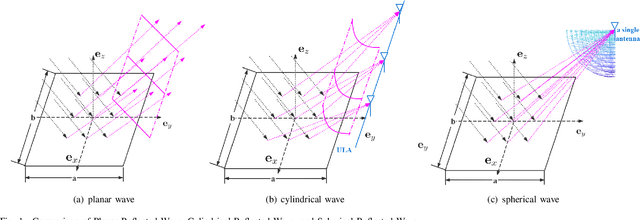
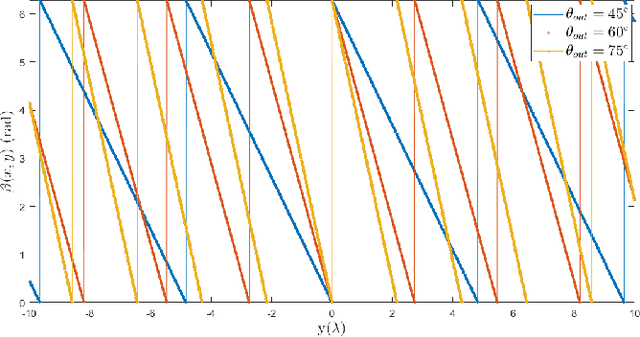
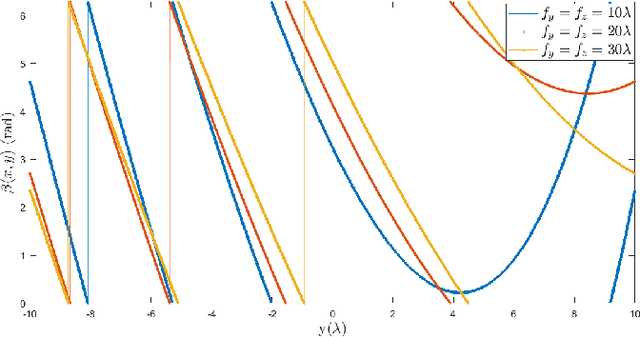
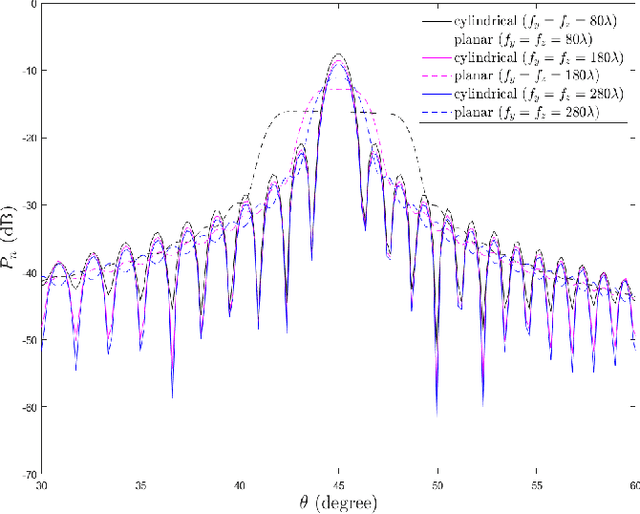
Abstract:Reconfigurable intelligent surface (RIS) can improve the communications between a source and a destination. The surface contains metamaterial that is configured to reflect the incident wave from the source towards the destination, especially when there is a blockage in between. Recently, continuous aperture RIS is proved to have better communication performance than discrete aperture RIS and has received much attention. However, the conventional continuous aperture RIS is designed to convert the incoming planar waves into the outgoing planar waves, which is not the optimal reflecting scheme when the receiver is not a planar array and is located in the near field of the RIS. In this paper, we consider two types of receivers in the radiating near field of the RIS: (1) when the receiver is equipped with a uniform linear array (ULA), we design RIS coefficient to convert planar waves into cylindrical waves; (2) when the receiver is equipped with a single antenna, we design RIS coefficient to convert planar waves into spherical waves. Simulation results demonstrate that the proposed scheme can reduce energy leakage at the receiver and thus enhance the channel capacity compared to the conventional scheme. More interestingly, with cylindrical or spherical wave radiation, the power received by the receiver is a function of its location and attitude, which could be utilized to sense the location and the attitude of the receiver with communication signaling.
Reconfigurable Intelligent Surfaces for Wireless Communications: Overview of Hardware Designs, Channel Models, and Estimation Techniques
Mar 07, 2022



Abstract:The demanding objectives for the future sixth generation (6G) of wireless communication networks have spurred recent research efforts on novel materials and radio-frequency front-end architectures for wireless connectivity, as well as revolutionary communication and computing paradigms. Among the pioneering candidate technologies for 6G belong the reconfigurable intelligent surfaces (RISs), which are artificial planar structures with integrated electronic circuits that can be programmed to manipulate the incoming electromagnetic field in a wide variety of functionalities. Incorporating RISs in wireless networks has been recently advocated as a revolutionary means to transform any wireless signal propagation environment to a dynamically programmable one, intended for various networking objectives, such as coverage extension and capacity boosting, spatiotemporal focusing with benefits in energy efficiency and secrecy, and low electromagnetic field exposure. Motivated by the recent increasing interests in the field of RISs and the consequent pioneering concept of the RIS-enabled smart wireless environments, in this paper, we overview and taxonomize the latest advances in RIS hardware architectures as well as the most recent developments in the modeling of RIS unit elements and RIS-empowered wireless signal propagation. We also present a thorough overview of the channel estimation approaches for RIS-empowered communications systems, which constitute a prerequisite step for the optimized incorporation of RISs in future wireless networks. Finally, we discuss the relevance of the RIS technology in the latest wireless communication standards, and highlight the current and future standardization activities for the RIS technology and the consequent RIS-empowered wireless networking approaches.
AIRIS: Artificial Intelligence Enhanced Signal Processing in Reconfigurable Intelligent Surface Communications
Jun 01, 2021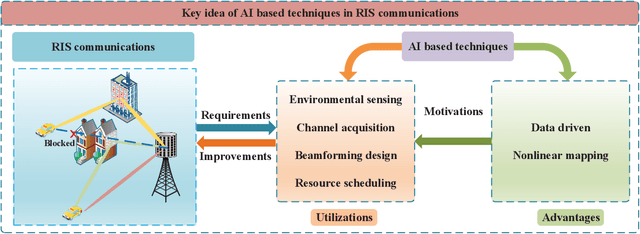
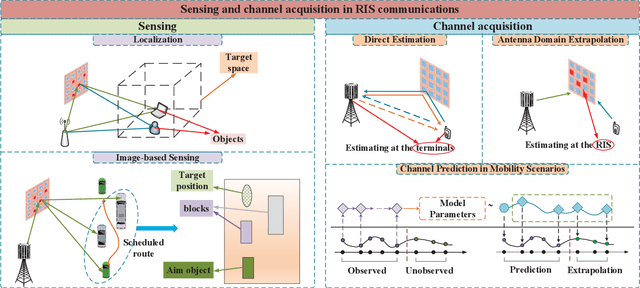
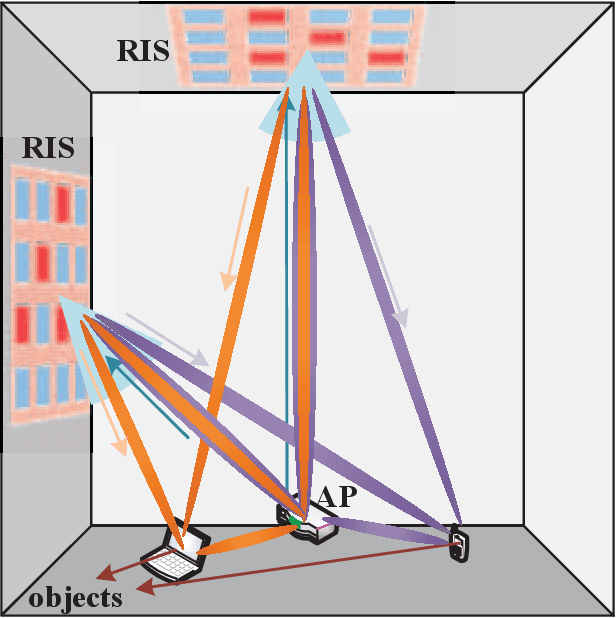
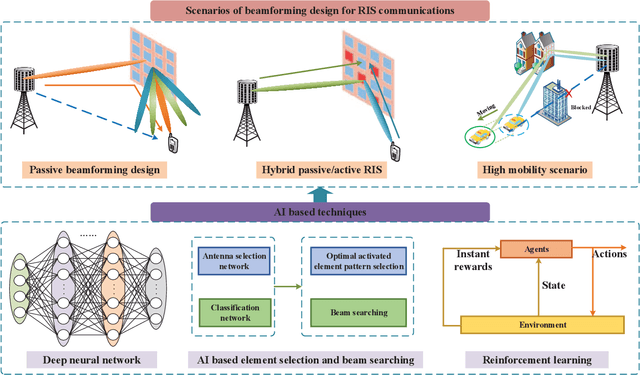
Abstract:Reconfigurable intelligent surface (RIS) is an emerging meta-surface that can provide additional communications links through reflecting the signals, and has been recognized as a strong candidate of 6G mobile communications systems. Meanwhile, it has been recently admitted that implementing artificial intelligence (AI) into RIS communications will extensively benefit the reconfiguration capacity and enhance the robustness to complicated transmission environments. Besides the conventional model-driven approaches, AI can also deal with the existing signal processing problems in a data-driven manner via digging the inherent characteristic from the real data. Hence, AI is particularly suitable for the signal processing problems over RIS networks under unideal scenarios like modeling mismatching, insufficient resource, hardware impairment, as well as dynamical transmissions. As one of the earliest survey papers, we will introduce the merging of AI and RIS, called AIRIS, over various signal processing topics, including environmental sensing, channel acquisition, beamforming design, and resource scheduling, etc. We will also discuss the challenges of AIRIS and present some interesting future directions.
 Add to Chrome
Add to Chrome Add to Firefox
Add to Firefox Add to Edge
Add to Edge